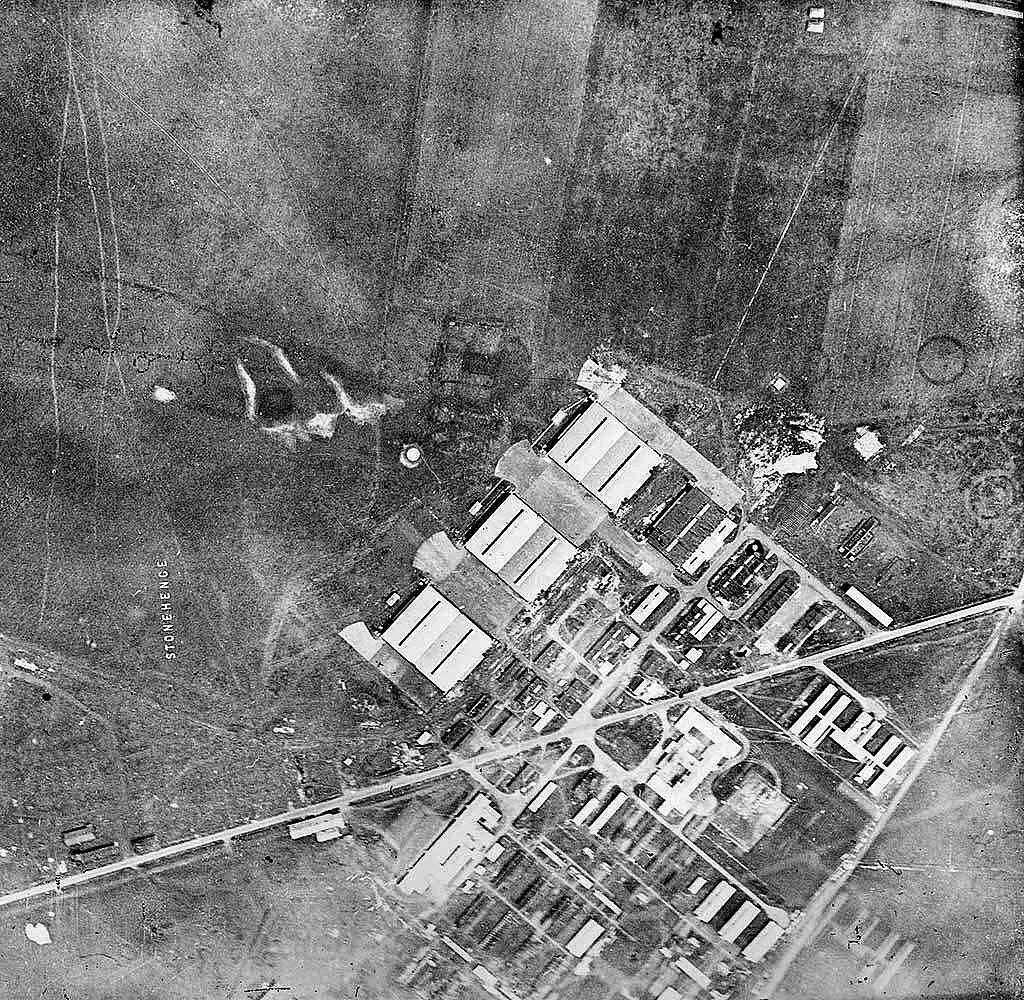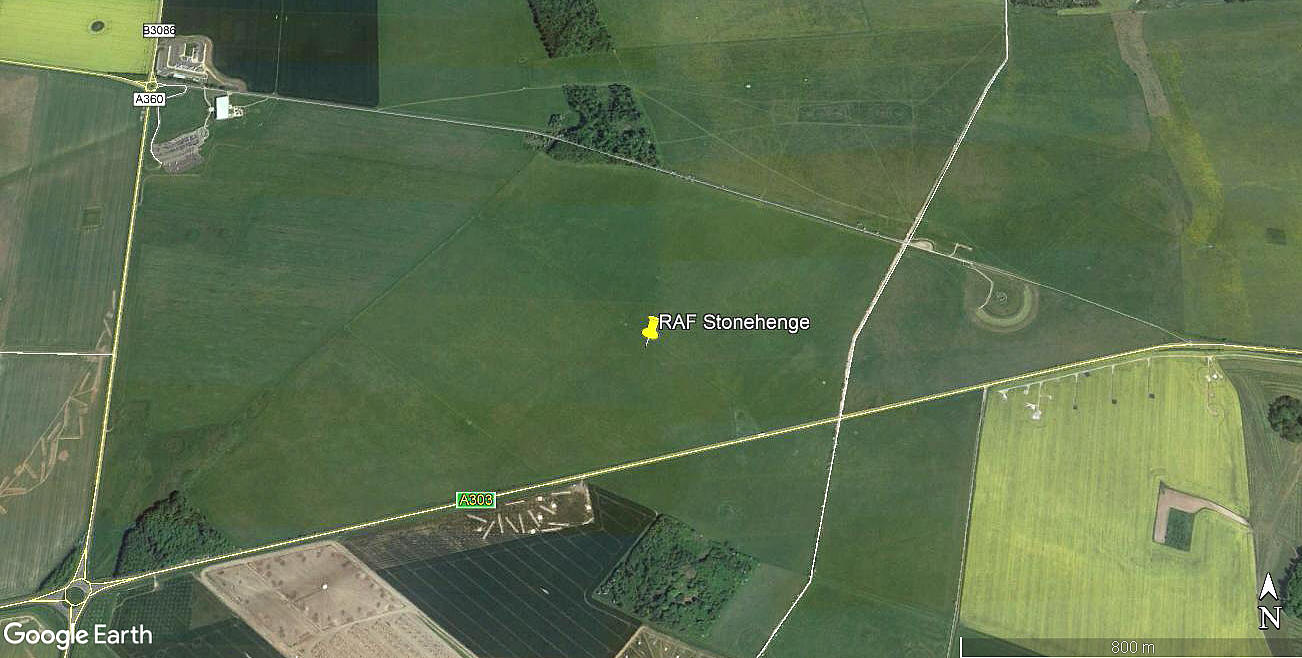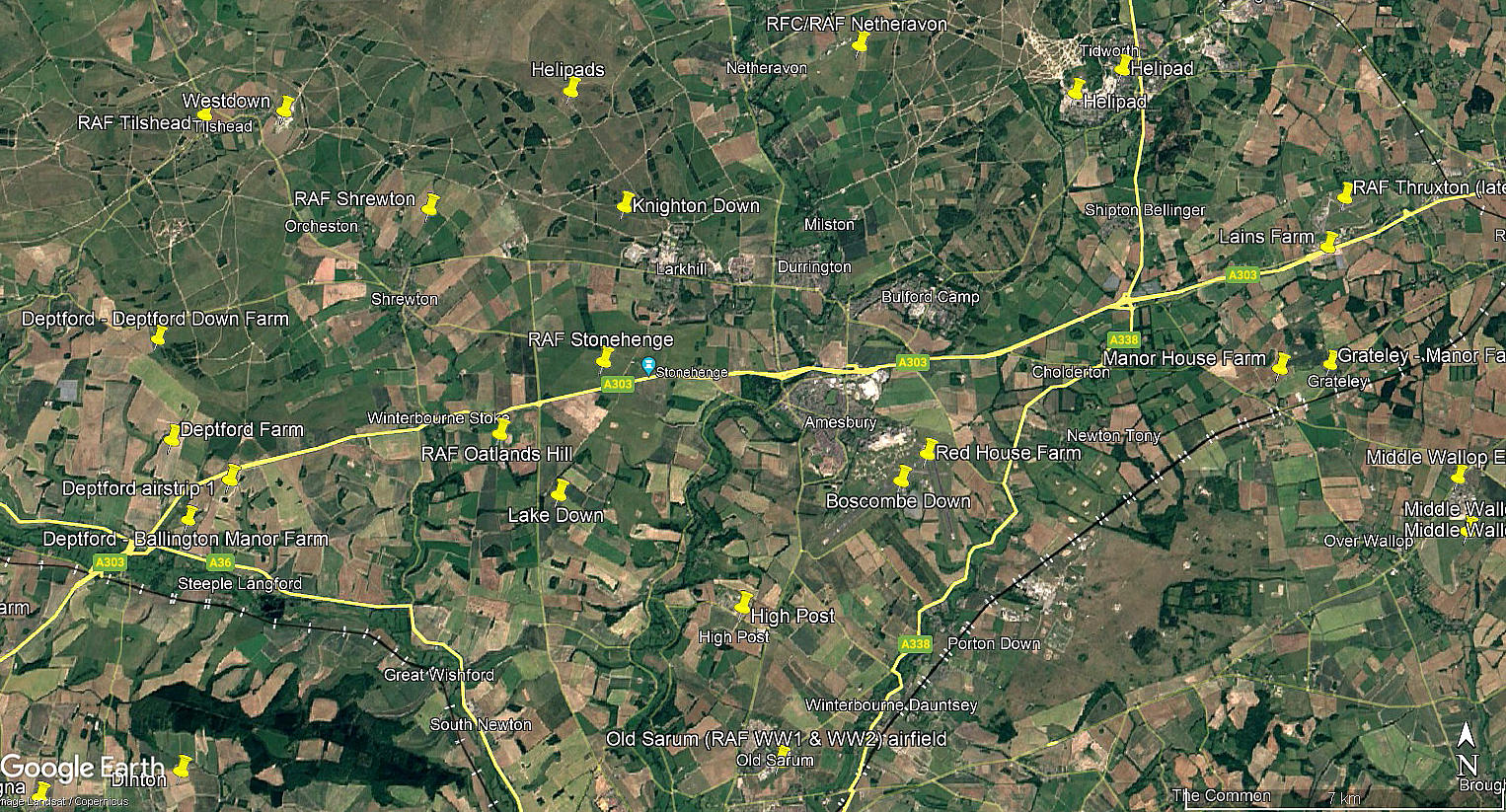Stonehenge
STONEHENGE: Military aerodrome
Note: The aerial photo is courtesy of English Heritage. The aerial view was obtained from Google Earth © and the area view is from my Google Earth © derived database.
Note: Perhaps the first thing to mention, regarding this listing, is that from the 1880s, military balloons had been used in this area for various excercises. Balloons of course being adopted quite early on by the military as an aid for both general reconnaissance, and indeed, a very good aid for artillery plotting.
Military users: RFC/RNAS/RAF (Royal Flying Corps / Royal Naval Air Service / Royal Air Force)
RFC Training Depot Station and School late1917 to January 1918.
RNAS (Royal Naval Air Service)
No.1 School of Aerial Navigation and Bomb Dropping, January 1918 to 1921
Note: The RFC and RNAS were almalgamated became the Royal Air Force on the 1st April 1918
Location: Sandwiched between the A303 and A344, about 0.5nm W of the Stonehenge prehistoric monument, about 1.5 to 2nm SW of LARKHILL
Note: The camp straddled the A303, then called the London to Exeter Road.
Period of operation: 1917 to 1921
Site area: 360 acres
NOTES: This aerodrome information came from various sources, including English Heritage.
The heavy bomber, (for night raids), mainly Handley Page designs, did not appear in service during the First World War until around 1916, the Handley Page O type making its first flight on the 17th December 1915. The main two variants of which around 600 were built being the H.P.11 Type 0/11 and the H.P.12 0?400.
Without much if any doubt the development of the heavy bomber was a much needed response to the night raids conducted over the UK by 'Zeppelin' airships. 'Zeppelin' being a generic term as Shütte-Lanz also built airships.
It appears that the Handley Page O/100 and O/400 were used here, and, mainly used in training for night raids.
ANOTHER NOTE
It can sometimes appear that the combination of night raids by 'Zeppelins' and Gotha heavy bombers formed the main night bombing offensive by the German air forces in WW1. Strictly speaking this is correct, but in one aspect the impression can be misleading. It was the British who spearheaded the heavy bomber, raiding as far east as the industrial centres in the Rhine. As said, becoming operational in 1916.
The Gotha G.V, built by Gothaer Waggonfabrik A.G., and flown not by the German Naval Aviation Department (Marine-Fliegerabteilung) as the airships were, but by the Luftstreitkräfte (Imperial German Air Service), did not it seems enter service until 1917.
We'd love to hear from you, so please scroll down to leave a comment!
Leave a comment ...
Copyright (c) UK Airfield Guide


















